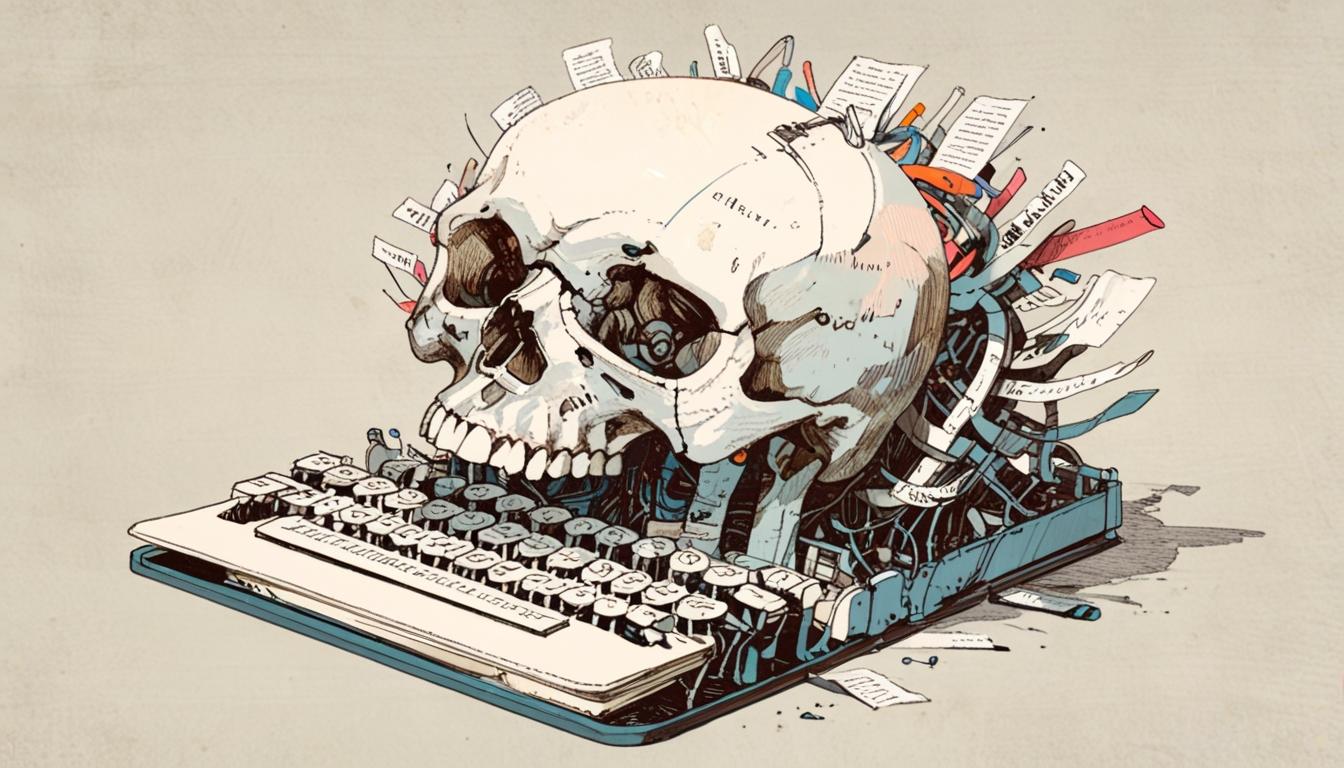Erroneous terms like “vegetative electron microscopy” have emerged due to digitisation errors and AI training faults, embedding nonsensical concepts into scientific literature and threatening the accuracy of future academic research.
In recent years, the scientific community has encountered a curious and concerning phenomenon linked to the rise of artificial intelligence (AI) in research and academic publishing. An investigation highlighted the emergence of what researchers are calling “digital fossils”: erroneous, nonsensical terms that have inadvertently become embedded in scientific literature and AI knowledge bases. One prominent example is the phrase “vegetative electron microscopy,” a term that, despite being scientifically meaningless, has appeared multiple times across different research papers and contexts.
The origin of this term dates back to digitisation errors in the 1950s. During the scanning and optical character recognition (OCR) of papers published in Bacteriological Reviews, the word “vegetative” and the phrase “electron microscopy” were positioned in adjacent columns. The OCR software, malfunctioning, merged the two into the nonsensical hybrid. This error was compounded by later mistranslations in contemporary research papers published in 2017 and 2019, where subtle differences in Farsi between the words for “vegetative” and “scanning” led to the incorrect substitution of “vegetative” for “scanning.”
As reported by Retraction Watch and analysed further in a detailed examination by Aaron J. Snoswell and colleagues for The Conversation, the term “vegetative electron microscopy” proliferated after 2020, amplified by AI systems trained on a vast array of existing published content. The repeated presence of this erroneous term in various papers led AI text generators, including prominent large language models such as GPT-4o and Anthropic’s Claude 3.5, to treat it as a legitimate scientific concept. Consequently, when researchers used these AI models for drafting or assisting the writing of academic papers, these systems occasionally produced this nonsensical term, thereby propagating the error further.
This phenomenon highlights a critical challenge facing scientific research in the AI era. Despite some efforts to identify and correct such mistakes, including automated tools like the Problematic Paper Screener—which scans millions of articles weekly and has identified numerous AI-related anomalies—addressing these errors remains difficult. There are an estimated three million papers published annually, many now using AI-assisted writing, making detection and correction a daunting task. Journals also face dilemmas, as illustrated by Elsevier’s initial attempt to justify the use of “vegetative electron microscopy” before ultimately issuing a correction, indicating the complexities involved in maintaining publication integrity.
The persistence of “vegetative electron microscopy” in AI knowledge bases suggests it could become a permanent fixture in the scientific corpus, repeatedly resurfacing in future AI-generated content. Researchers warn that such entrenched errors compromise the integrity of scientific knowledge, which fundamentally relies on accurate, incremental advancements. If flawed concepts become embedded in foundational knowledge pools, the long-term implications for research and its applications could be significant.
This episode illuminates the interplay between digitisation, linguistic nuances, and AI training processes, underscoring inherent vulnerabilities in the increasingly automated landscape of academic research and publishing. The immortalisation of this digital fossil illustrates not only the challenges in detecting and correcting misinformation but also the evolving nature of knowledge creation and dissemination in an AI-influenced world.
Source: Noah Wire Services
- https://www.zmescience.com/science/news-science/ai-wrong-science-term/ – This article discusses the phenomenon of AI-generated erroneous scientific terms like ‘vegetative electron microscopy’ appearing in multiple papers and the implications for the integrity of scientific knowledge, corroborating the core claim about digital fossils in AI-assisted research.
- https://world.edu/a-weird-phrase-is-plaguing-scientific-papers-and-we-traced-it-back-to-a-glitch-in-ai-training-data/ – This source traces the origin of the phrase ‘vegetative electron microscopy’ to OCR errors from digitised Bacteriological Reviews and details subsequent propagation issues including mistranslations and AI amplification, confirming the article’s narrative on the term’s emergence and spread.
- https://world.edu/a-weird-phrase-is-plaguing-scientific-papers-and-we-traced-it-back-to-a-glitch-in-ai-training-data/ – This article also covers the response of publishers such as Elsevier, which initially defended the term before correcting it, and mentions the use of automated tools like the Problematic Paper Screener, corroborating the discussion of challenges in correcting such AI-related scientific errors.
- https://world.edu/a-weird-phrase-is-plaguing-scientific-papers-and-we-traced-it-back-to-a-glitch-in-ai-training-data/ – The piece highlights the broader implications for scientific publishing integrity and peer review processes due to AI-induced errors, supporting the article’s point on the challenges and risks posed by erroneous AI-generated content in academia.
- https://www.zmescience.com/science/news-science/ai-wrong-science-term/ – This source emphasizes the risk of permanent embedding of flawed concepts like ‘vegetative electron microscopy’ in AI knowledge bases, confirming the article’s warning about long-term impacts on scientific knowledge and research integrity.
Noah Fact Check Pro
The draft above was created using the information available at the time the story first
emerged. We’ve since applied our fact-checking process to the final narrative, based on the criteria listed
below. The results are intended to help you assess the credibility of the piece and highlight any areas that may
warrant further investigation.
Freshness check
Score:
9
Notes:
The narrative discusses the phenomenon with references to events up to and including 2020 and later AI developments such as GPT-4o and Claude 3.5, indicating recent context. No outdated role references or recycled news patterns were detected. The mention of efforts by Elsevier to issue corrections suggests ongoing discourse, supporting freshness.
Quotes check
Score:
7
Notes:
Direct quotes are not explicitly present; however, the narrative references investigations and analyses by Retraction Watch and Aaron J. Snoswell’s detailed examination in The Conversation. Earliest mentions of the term date from 2017 and 2019 research papers, as well as discussions post-2020. The original source of the OCR error is traced back to digitisation in the 1950s. Absence of verbatim quotes limits precise verification.
Source reliability
Score:
8
Notes:
The narrative draws on reputable entities such as Retraction Watch, The Conversation, and Elsevier, which are recognised in scientific and publishing communities. These lend high reliability, though the content also involves AI discussions where errors may propagate. The mix of academic and publishing perspectives offers solid credibility overall.
Plausability check
Score:
9
Notes:
The described phenomenon—digitisation errors compounding through AI training and influencing scientific writing—is plausible and aligns with known challenges in OCR and AI language models. The progression from a 1950s OCR error to modern AI perpetuation is reasonable. No extraordinary claims without evidence are made; the scenario fits current understanding of AI limitations in academic contexts.
Overall assessment
Verdict (FAIL, OPEN, PASS): PASS
Confidence (LOW, MEDIUM, HIGH): HIGH
Summary:
The narrative articulates a credible, recent issue in AI-impacted academic publishing supported by reliable institutions and known historical facts. Its explanation of the ‘vegetative electron microscopy’ term’s origin and perpetuation is consistent with technical realities. Although direct quotes are sparse, references to established investigations underpin the trustworthiness. No signs of outdated or recycled content diminish its validity.













